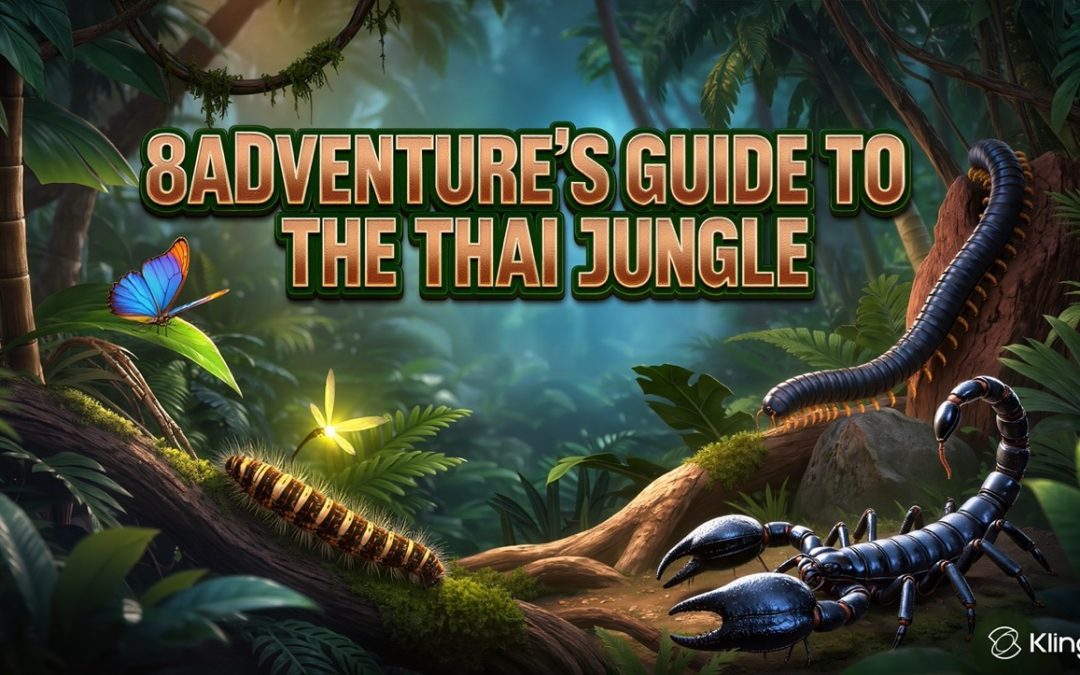Welcome to 8Adventure’s Camp
Welcome to 8Adventures Base Camp! As you can see, we’re located out here in the jungle, so lots of things come and go through the camp. Over the years, we’ve had very few problems, but I want to give you some information to help make sure you don’t have any incidents during your stay.
The first thing we want to talk about is being aware of your surroundings. Whenever you’re moving through the jungle, heading to the toilet, or even coming into the restaurant area take a moment to look around you. Check under the table, look above and around the toilet, and along the sides. Sometimes, small animals or even a snake might crawl into a quiet spot to hide. Staying alert helps you avoid surprises.
Along with insects and amazing birds we will also see elephants, read more here https://8adventures.com/elephants-giants-of-the-thai-jungle/
Click below to read about the jungle critters we may encounter!
Snakes
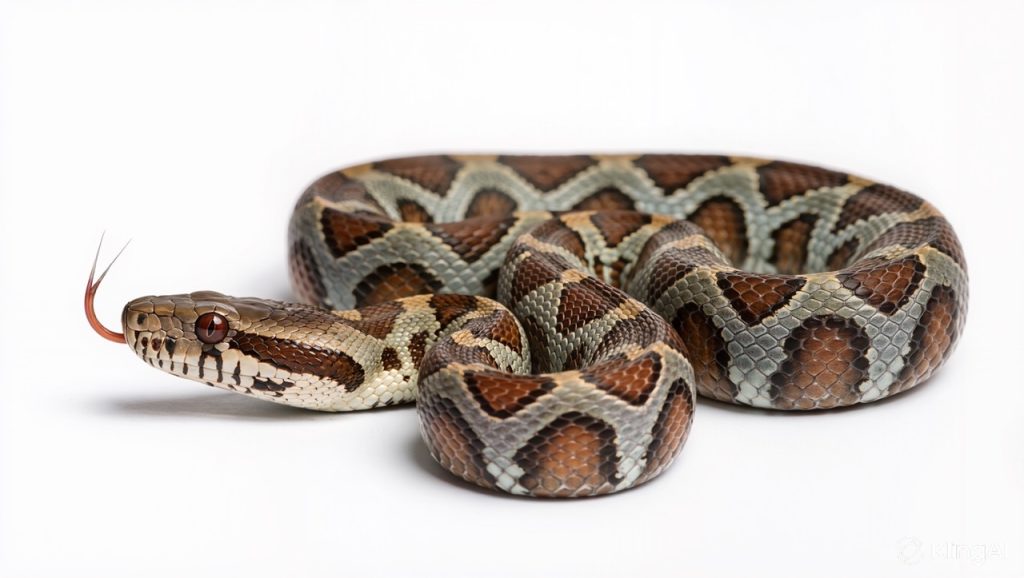
Let’s start with snakes, they’re usually what’s on people’s minds the most. We do have lots of snakes out here, ranging from dangerous ones like king cobras and kraits (highly venomous) to more harmless ones like Oriental gliding snakes.
So how do we deal with snakes? It’s simple: don’t put your hands anywhere you can’t see. For example, if you’re picking up a log or a rock, lift it from the edge don’t reach underneath.
When you go to the toilets, especially at night, use your headlamp and take a quick look around above, below, and to the sides just to make sure nothing has crawled in to rest for the evening.
Over the years, we’ve never had a serious snake‐bite issue here. Still, when you’re setting up your tents, remember to seal your bags and zip up your tent. Don’t leave them open this keeps out any small animals or critters looking for a cozy place to hide.
What to Do If You See a Snake
If you do happen to see a snake, the first thing you should do is come and let one of us know. Don’t try to hit it, chase it, or move it yourself. Just keep your distance and tell a staff member right away we’ll handle the situation safely and appropriately.
Bees, Wasps, and Hornets
“Let’s talk a little about bees, wasps, and hornets. When you’re out trekking, these are some of the creatures you might come across.

Bees: The species we have here include the giant honeybee Apis dorsata found in Thailand and other parts of Asia. They build large exposed hives, often high up in trees or under ledges.
If you see one of their hives, keep your distance. These bees can be quite aggressive if disturbed.
Wasps and Hornets: These make nests in more varied places in the ground, in hollow logs, or high in trees. One to watch for is the giant hornet (sometimes called Asian giant hornet) which can be larger and more dangerous than bees. The important difference: hornets can sting multiple times, whereas a bee typically dies after one sting. If you spot a large wasp/hornet nest, keep your distance and tell a guide.”

“Now let’s go into a bit more detail. If you come across a freshly fallen tree, be alert: sometimes a nest from inside may have collapsed and the insects inside may be agitated and ready to defend.
If you see hornets or tiger wasps, especially large nests hanging from trees, admire from a distance. If one of the giant types (size of your pinky finger or more) flies by, back away slowly and let a guide handle the situation. These species have potent stings and often target threats proactively.
If you’re ever stung by any kind of wasp or hornet, let us know immediately and try to describe it its size, color, and how many there were. And if you’re allergic to bee or wasp stings, please tell your teachers and our guides right after watching this video.”
Scorpions and Centipedes

There are two other critters you might come across while you’re here scorpions and centipedes.
Scorpions: The species found in Thailand generally have venom that is mild the sting is usually comparable to a bee or wasp sting. Still, if you happen to see one, let us know and we’ll come take care of it safely.
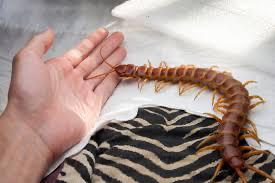
Centipedes: These can be more serious. In Thailand one of the large species is Scolopendra subspinipes (or related species) known locally as takhap (ตะขาบ). They may reach up to ~20 cm long, have strong pincer-legs at the front, and their bites are extremely painful; some cases require medical attention.
If someone is bitten, especially a child or someone with a weaker reaction, we’ll need to take them to hospital so it’s best to stay away. If you see one, move back and let us know right away.
It’s important not to confuse centipedes with millipedes. Millipedes are harmless, move slowly, and curl up; centipedes move fast, are more aggressive, and have the distinct pincer-legs.
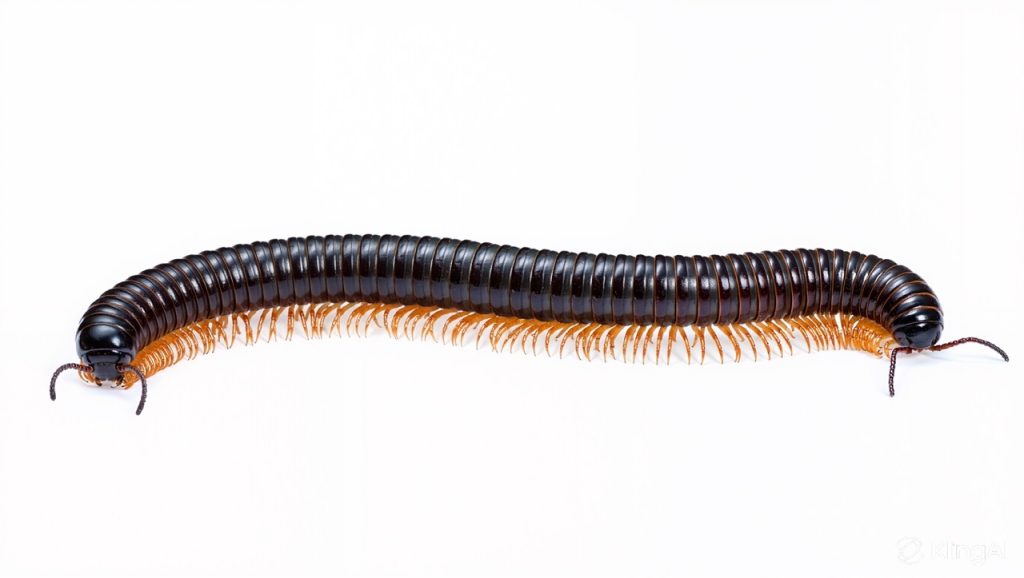
Caterpillars

Out here, we have all kinds of caterpillars. At night they climb trees to feed; in the day some descend on fine threads seeking shade or cooler spots.
If you see a fuzzy caterpillar, it’s safer to assume it can cause skin irritation. The hairs may lodge in skin or clothing and trigger allergic reactions. If such contact occurs, especially crushed against skin or clothing, we’ll need to remove the clothing and possibly dispose of it depending on severity.
These caterpillars range in size (from very small to as long as your index finger), and you may see them dangling on silk threads or crawling up tree trunks. With awareness and care, they’re more of an irritation risk than a major threat. However, be careful not to touch caterpillars with spines (fortunately these are very rare)
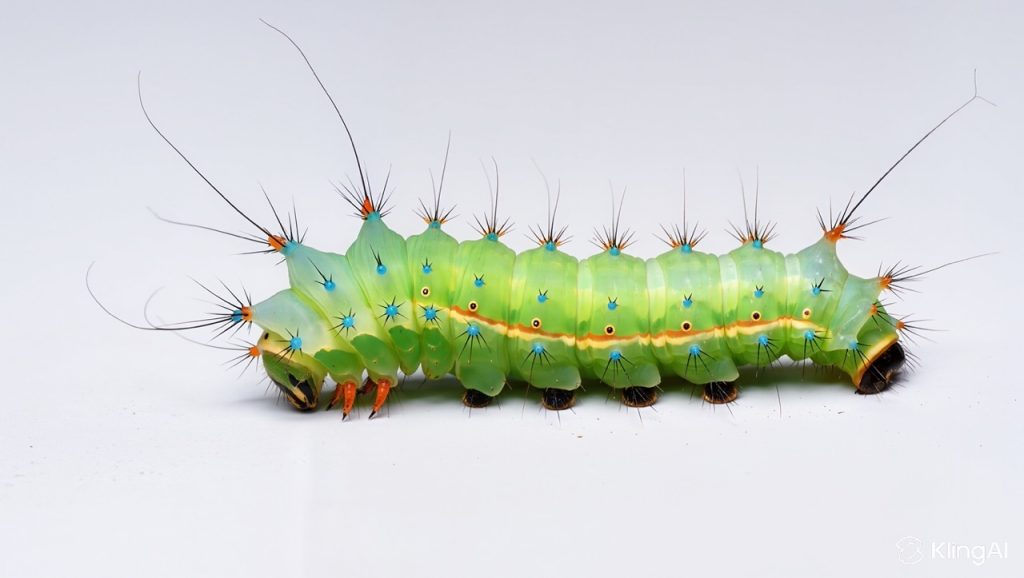
Mosquitoes
Everyone knows mosquitoes, but they’re worth mentioning. We don’t have malaria here (in our area), but dengue fever is present in Thailand.
Protection is simple: wear long-sleeve shirts and long pants, especially in the early mornings and evenings, and use mosquito repellent on exposed skin.
Most bites just itch, but scratching can lead to infections especially when we’re rafting or trekking through jungle terrain. So cover up, use repellent, and avoid scratching mosquito bites.
Rove Beetles
These small beetles (family Paederinae) are found in Thailand. One important genus is Paederus fuscipes, whose toxin can cause serious skin irritation if crushed on the skin. There are many that look simalary in in shap but are larger and don’t have the coloration of black red black red black they are just black these are harmless.
Typically they’re no larger than a one-baht coin. They might be found in grass near riverbanks. The key hazard: don’t crush them on your skin or clothing. The toxin causes blisters or dermatitis. If you accidentally crush one, wash the area immediately with water and tell a staff member.

Ants and Termites

We have a big variety of ants and a few termites around camp, so let’s get to know who’s who.
You’ll see small black ants on plants these are Dolichoderus thoracicus, also known as cocoa black ants. They’re harmless and usually just taking care of other tiny insects.
The large orange weaver ants, called mot daeng in Thai (Oecophylla smaragdina), are amazing hunters and protect fruit trees from pests. They can bite, and it stings for a second, but nothing serious. Locally, both their eggs and adults are eaten, high in protein and have a tangy, citrus-like taste.
There’s also a wasp-looking ant, Tetraponera rufonigra. These live in trees and in dead leaf or log matter on the ground, and they can give a sharp, shooting sting so give them plenty of space. They look a little like rove beetles, but they’re larger. Rove beetles prefer the moist grass and riverbanks, while these ants like drier, dead wood.
Then there are the small red fire ants, about 1 mm long Solenopsis geminata. They bite hard, and the pain can last for hours. They live in grass, sand, and even trees, and they tend to push out other ants when they move in so steer clear of their trails and nests. They have a great sense of smell and will seek out any food left in your tent. If you leave food inside, you’ll likely be giving up your tent to them!
Finally, don’t confuse ants with termites. Termites are peaceful recyclers that eat dead wood and help keep the forest healthy. Without them, we’d have too much dry debris and a higher risk of wildfires.
So remember: black ants – chill; weaver ants – helpful, wasp-ants – avoid, fire ants – painful, termites – friends of the forest.
Spiders

Spiders are one of those things that tend to freak people out but the good news is that here in Thailand, we don’t have any spiders that are more dangerous than a bee or wasp sting. Most are completely harmless.
They come in a huge variety of sizes from the large golden orb spiders, which spin some of the strongest web in the world and can grow almost as big as your hand, to smaller species like jumping spiders, which are curious but harmless.
You might also see tarantulas in the forest or huntsman spiders in caves both look intimidating but generally avoid people.
When we’re rafting, you might notice small orb-weaver or cobweb spiders that sometimes drop into the boat from the riverside brush. They’re harmless too.
So, while you’ll see spiders of all shapes and sizes out here, there’s really nothing to worry about just leave them alone and they’ll leave you alone.
What to Do If an Insect Crawls on You
“The biggest mistake people make with insects is smacking or crushing them. That’s often when problems start centipedes may bite, fuzzy caterpillars release hairs, rove beetles’ toxins get pressed into skin.
If you feel something crawling on you, stay calm and gently brush it off. If it’s a caterpillar or beetle, use a leaf to let it crawl onto, then move the leaf away. Don’t squash it.
If a rove beetle gets into your tent, call one of us and we’ll remove it safely. If you leave insects alone, they’ll leave you alone.”
Final Thoughts: Enjoy the Jungle
“Sometimes after I give this talk, everyone starts thinking, oh no, the whole jungle’s out to get me! Don’t worry it’s really not like that.
Remember: be aware of your surroundings.
I’ve been here for over 20 years and in that time, we’ve had very few serious incidents. A few bees, wasps, caterpillars but nothing major.
The jungle is full of life, beauty, and adventure. If you stay alert and respectful, you’ll be completely safe and you’ll get to see some amazing wildlife, including the incredible elephants. It’s going to be a fun, safe, and unforgettable experience here with us at 8Adventures.”


